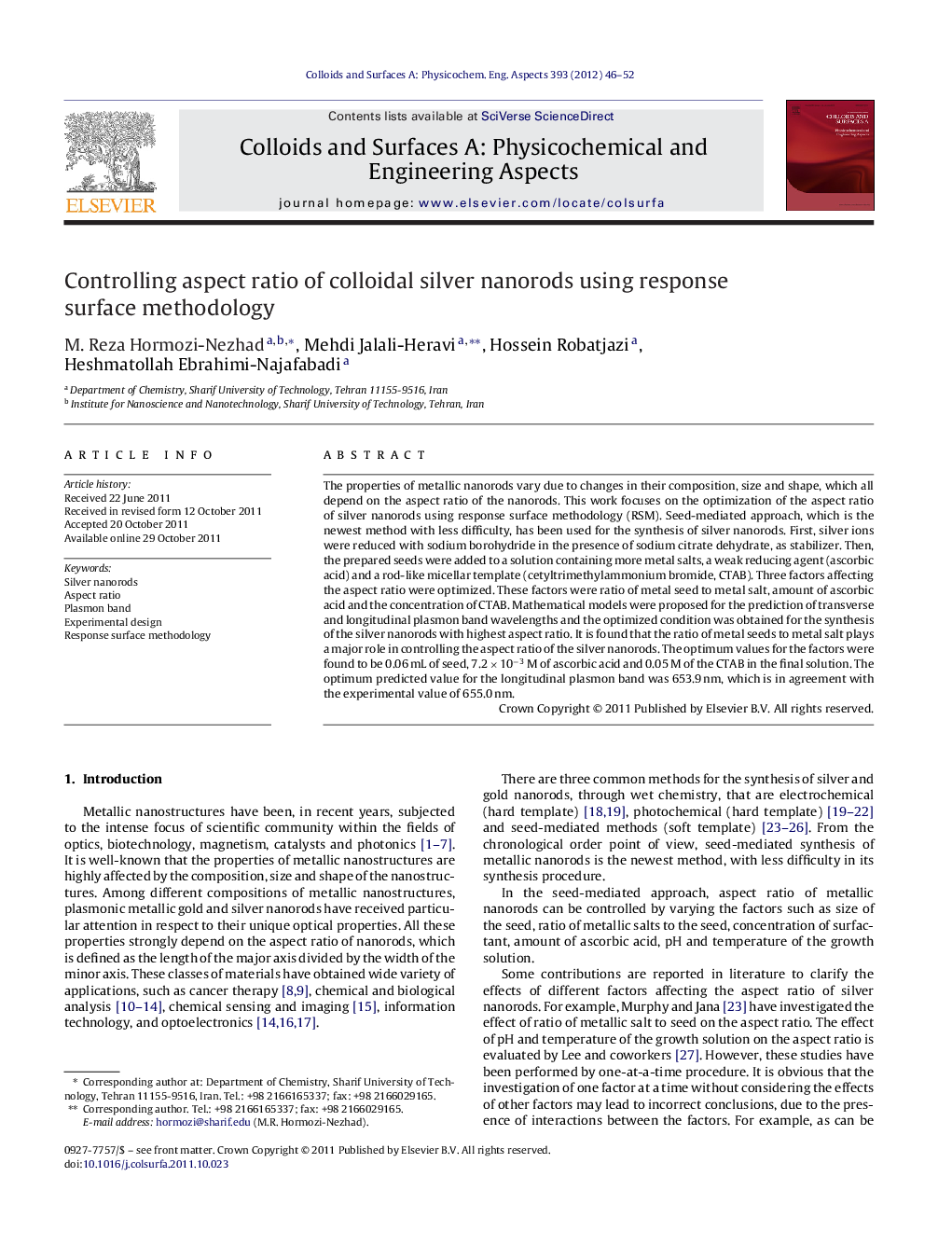| Article ID | Journal | Published Year | Pages | File Type |
|---|---|---|---|---|
| 594339 | Colloids and Surfaces A: Physicochemical and Engineering Aspects | 2012 | 7 Pages |
The properties of metallic nanorods vary due to changes in their composition, size and shape, which all depend on the aspect ratio of the nanorods. This work focuses on the optimization of the aspect ratio of silver nanorods using response surface methodology (RSM). Seed-mediated approach, which is the newest method with less difficulty, has been used for the synthesis of silver nanorods. First, silver ions were reduced with sodium borohydride in the presence of sodium citrate dehydrate, as stabilizer. Then, the prepared seeds were added to a solution containing more metal salts, a weak reducing agent (ascorbic acid) and a rod-like micellar template (cetyltrimethylammonium bromide, CTAB). Three factors affecting the aspect ratio were optimized. These factors were ratio of metal seed to metal salt, amount of ascorbic acid and the concentration of CTAB. Mathematical models were proposed for the prediction of transverse and longitudinal plasmon band wavelengths and the optimized condition was obtained for the synthesis of the silver nanorods with highest aspect ratio. It is found that the ratio of metal seeds to metal salt plays a major role in controlling the aspect ratio of the silver nanorods. The optimum values for the factors were found to be 0.06 mL of seed, 7.2 × 10−3 M of ascorbic acid and 0.05 M of the CTAB in the final solution. The optimum predicted value for the longitudinal plasmon band was 653.9 nm, which is in agreement with the experimental value of 655.0 nm.
Graphical abstractFigure optionsDownload full-size imageDownload as PowerPoint slideHighlights► We are finely controlling the aspect ratio of silver nanorods using experimental design. ► We study the effect of variables on aspect ratio (AR) of silver nanorods simultaneously. ► We use response surface methodology to make the relation among parameters affect on AR.
